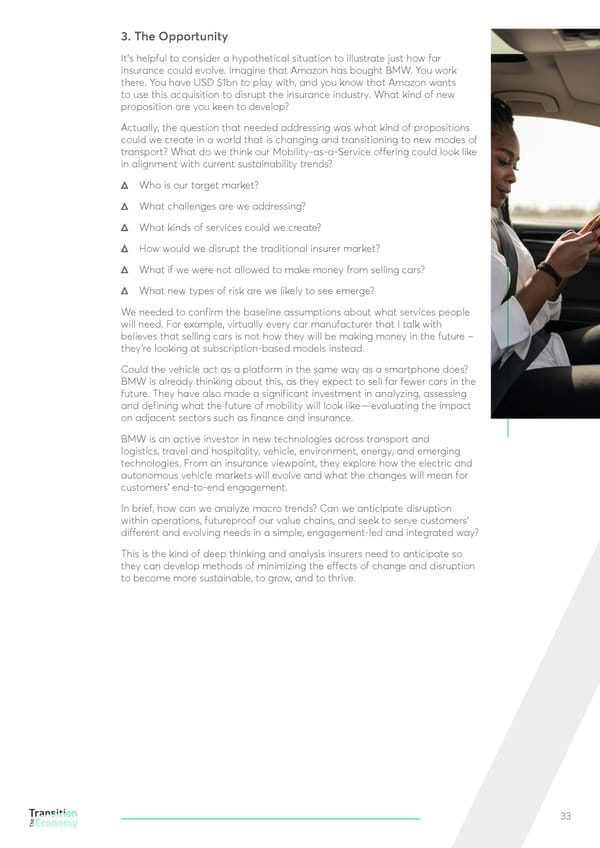3. The Opportunity It’s helpful to consider a hypothetical situation to illustrate just how far insurance could evolve. Imagine that Amazon has bought BMW. You work there. You have USD $1bn to play with, and you know that Amazon wants to use this acquisition to disrupt the insurance industry. What kind of new proposition are you keen to develop? Actually, the question that needed addressing was what kind of propositions could we create in a world that is changing and transitioning to new modes of transport? What do we think our Mobility-as-a-Service offering could look like in alignment with current sustainability trends? Who is our target market? What challenges are we addressing? What kinds of services could we create? How would we disrupt the traditional insurer market? What if we were not allowed to make money from selling cars? What new types of risk are we likely to see emerge? We needed to confirm the baseline assumptions about what services people will need. For example, virtually every car manufacturer that I talk with believes that selling cars is not how they will be making money in the future – they’re looking at subscription-based models instead. Could the vehicle act as a platform in the same way as a smartphone does? BMW is already thinking about this, as they expect to sell far fewer cars in the future. They have also made a significant investment in analyzing, assessing and defining what the future of mobility will look like—evaluating the impact on adjacent sectors such as finance and insurance. BMW is an active investor in new technologies across transport and logistics, travel and hospitality, vehicle, environment, energy, and emerging technologies. From an insurance viewpoint, they explore how the electric and autonomous vehicle markets will evolve and what the changes will mean for customers’ end-to-end engagement. In brief, how can we analyze macro trends? Can we anticipate disruption within operations, futureproof our value chains, and seek to serve customers’ different and evolving needs in a simple, engagement-led and integrated way? This is the kind of deep thinking and analysis insurers need to anticipate so they can develop methods of minimizing the effects of change and disruption to become more sustainable, to grow, and to thrive. 33
 The Transition Economy High Res Page 32 Page 34
The Transition Economy High Res Page 32 Page 34